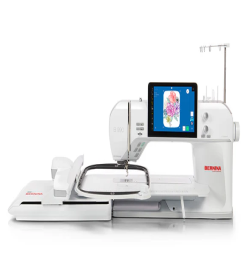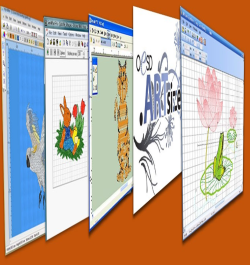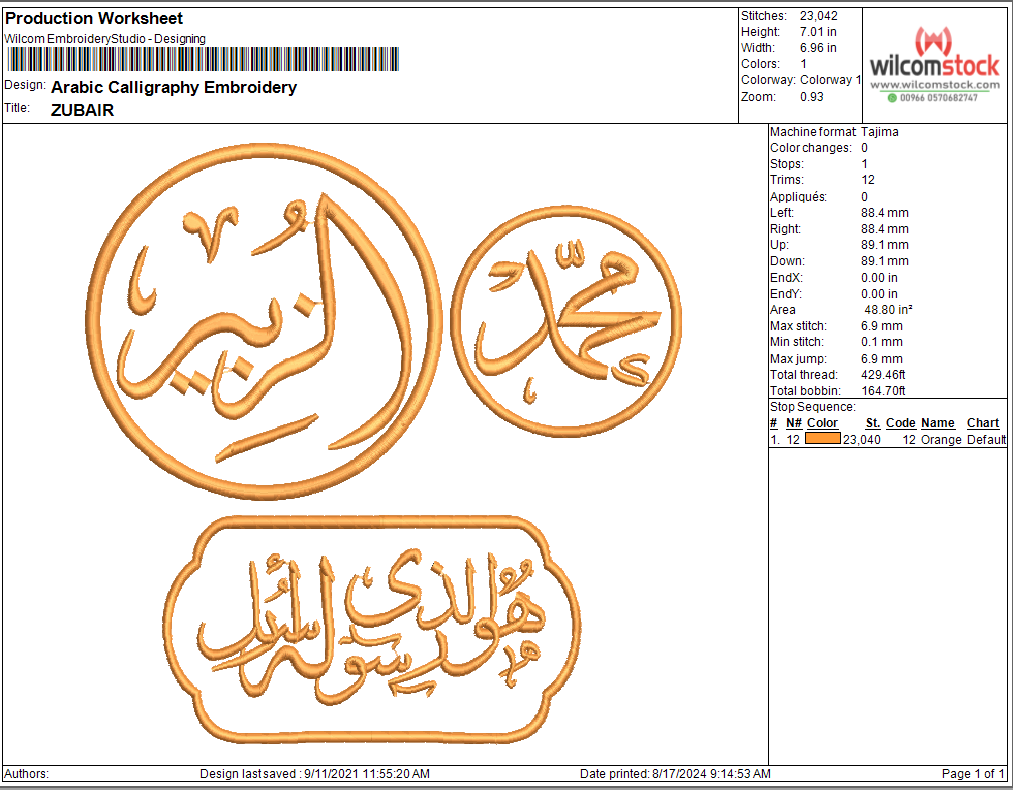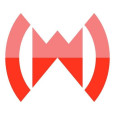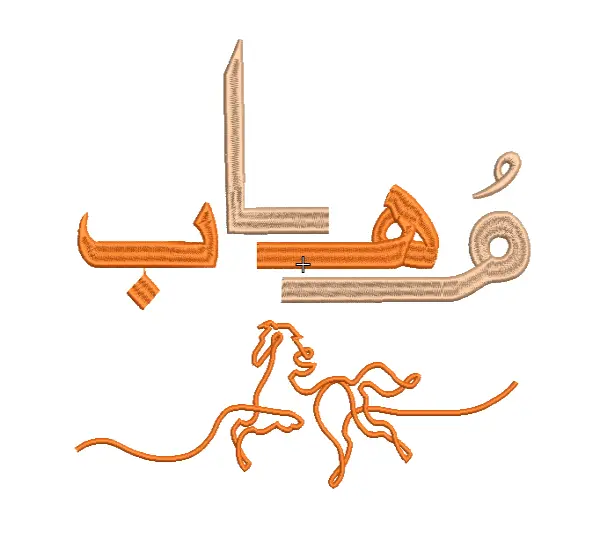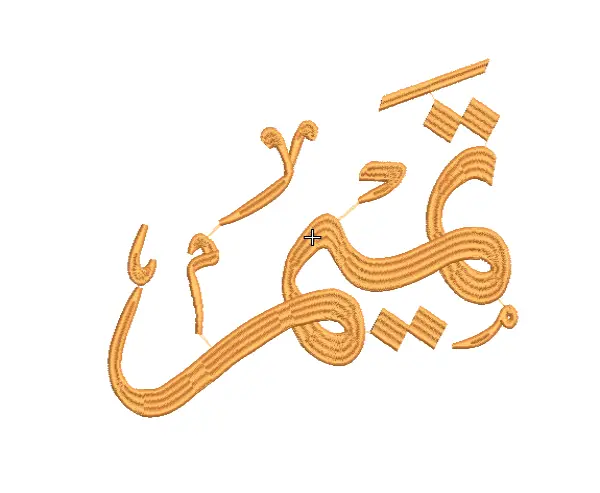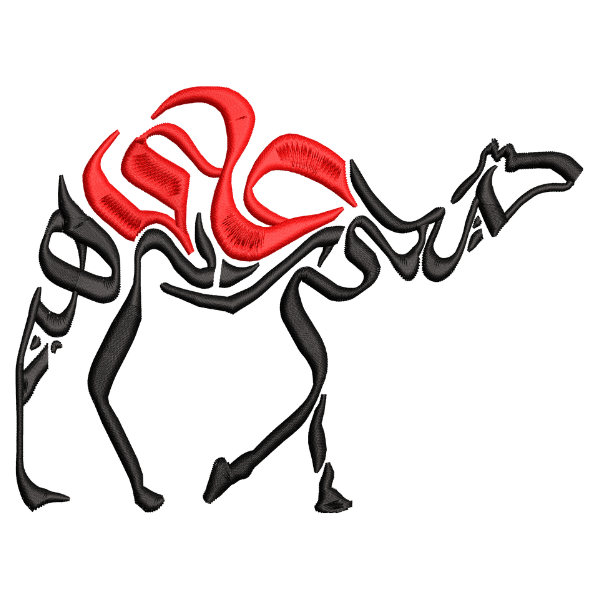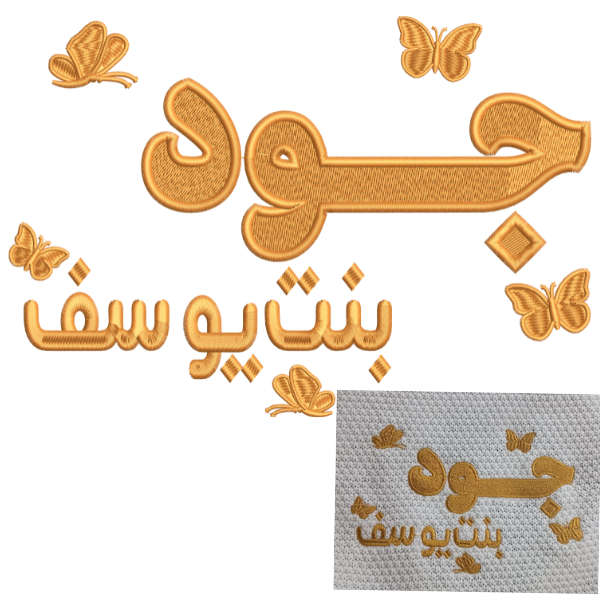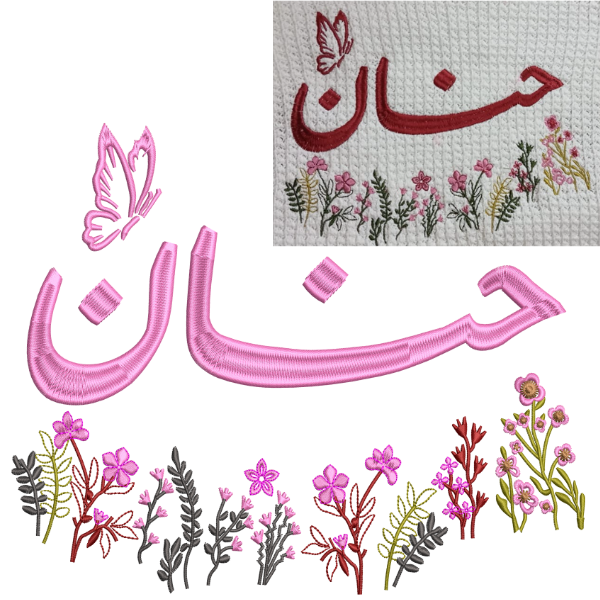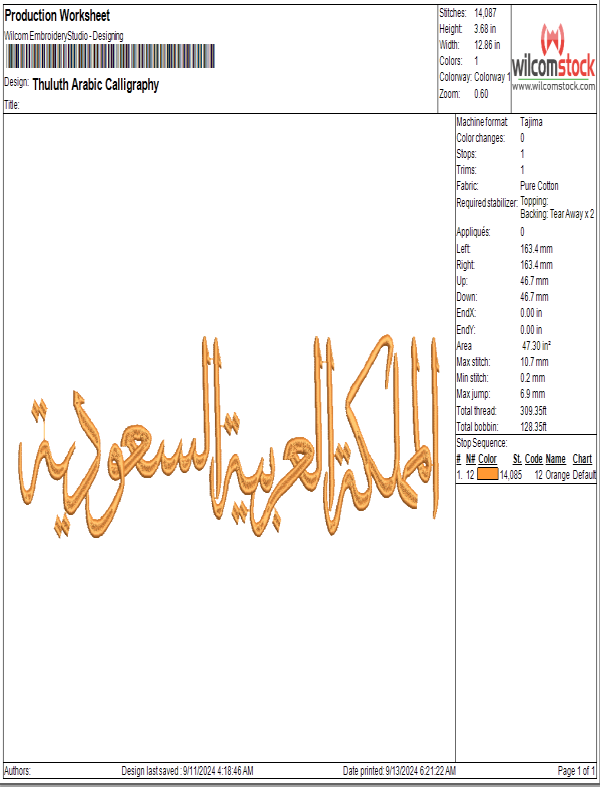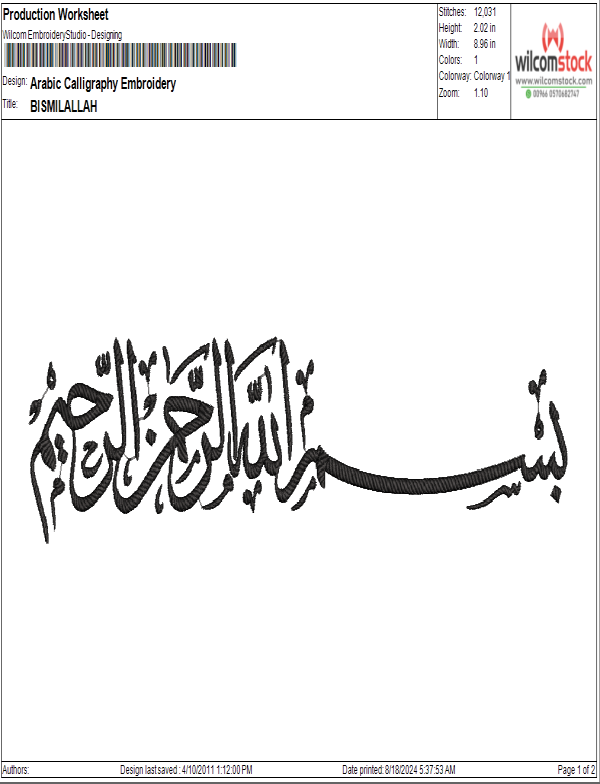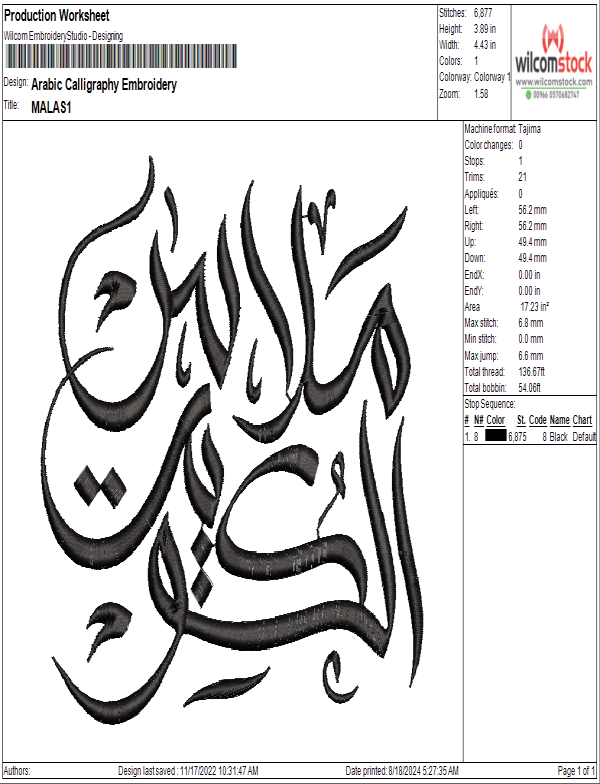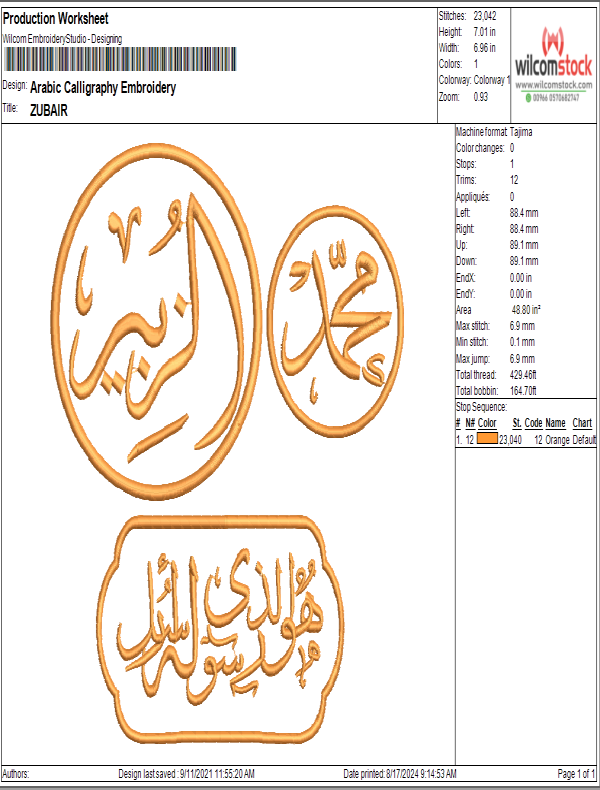Arabic calligraphy embroidery is a beautiful fusion of traditional art and modern textile techniques. This intricate craft combines elegant Arabic script with stunning embroidery patterns, making it a unique addition to any textile project. With a design template size of 7.01 inches in height and 6.96 inches in width, this template is perfect for creating decorative pieces, garments, or home décor items. Below, we explore the elements of Arabic calligraphy embroidery, its significance, and practical tips for creating captivating designs.
The Art of Arabic Calligraphy
Arabic calligraphy is not just writing; it is an art form that conveys emotion and cultural significance. Calligraphers put significant thought into the flow and curvature of each letter, resulting in breathtaking designs that capture the beauty of the Arabic language. This template allows you to incorporate this art into your embroidery projects seamlessly.
Benefits of Arabic Calligraphy Embroidery
- Aesthetic Appeal: Adds a rich cultural element to designs.
- Spiritual Significance: Often includes Quranic verses or inspirational messages.
- Cultural Heritage: Preserves traditional Arabic artistic expressions.
- Versatility: Suitable for various applications, from clothing to wall art.
| Feature | Description |
|---|---|
| Template Size | 7.01 in height x 6.96 in width |
| Price | $1.99 |
| Downloadable Files | EMB, DST |
Choosing the Right Fabric
When working with Arabic calligraphy embroidery, the choice of fabric is crucial. Certain fabrics enhance the aesthetic and longevity of the embroidery. Below are some recommended fabrics and their properties:
- Cotton: Breathable and versatile, excellent for everyday items.
- Satin: Smooth and shiny, ideal for luxurious clothing or decorative pieces.
- Linen: Strong and durable, perfect for home textiles like tablecloths.
- Silk: Offers a rich texture, great for intricate embroidery projects.
| Fabric Type | Properties |
|---|---|
| Cotton | Soft, breathable, easy to work with. |
| Satin | Luxurious sheen, smooth texture. |
| Linen | Durable, strong, and textured. |
| Silk | Soft, shiny, and elegant. |
Preparing Your Design
Prepping your embroidery design involves several key steps to ensure a stunning final product. Here's a quick checklist to follow:
- Choose your calligraphy style – Consider traditional scripts versus modern interpretations.
- Use quality software – Ensure your design is digitized correctly for embroidery.
- Test your design – Perform a test run on scrap fabric to fine-tune settings.
- Adjust stitch density – Ensure your design has the right density for your fabric choice.
| Preparation Step | Details |
|---|---|
| Choose Style | Consider options like Diwani, Thuluth, Naskh. |
| Software | Use recognized embroidery software for best results. |
| Test Run | Run a sample on a less expensive fabric first. |
| Stitch Density | Adjust settings based on fabric. Dense for heavy fabrics, lighter for delicate ones. |
Techniques for Successful Embroidery
Embroidery techniques play a vital role in the quality of the output. Below are key techniques to consider:
- Utilize hooping: Ensures your fabric remains taut during stitching.
- Choose the right needle: Ballpoint needles are great for knits, while sharp needles are ideal for woven fabrics.
- Maintain thread tension: Consistent tension prevents uneven stitching.
- Layering: Experiment with different thread layers for a textured effect.
| Embroidery Technique | Description |
|---|---|
| Hooping | Keeps fabric tight and stable. |
| Needle Choice | Varies based on fabric type. |
| Thread Tension | Maintaining even tension is crucial for success. |
| Layering | Create depth and complexity in designs. |
Conclusion
With its rich cultural history and breathtaking beauty, Arabic calligraphy embroidery can elevate your design projects to new heights. By effectively utilizing this template, choosing the right fabrics, and mastering various embroidery techniques, you can create stunning pieces that showcase the elegance of Arabic art. Whether you're designing clothing, décor, or personalized gifts, this embroidery style offers endless possibilities for creativity.
